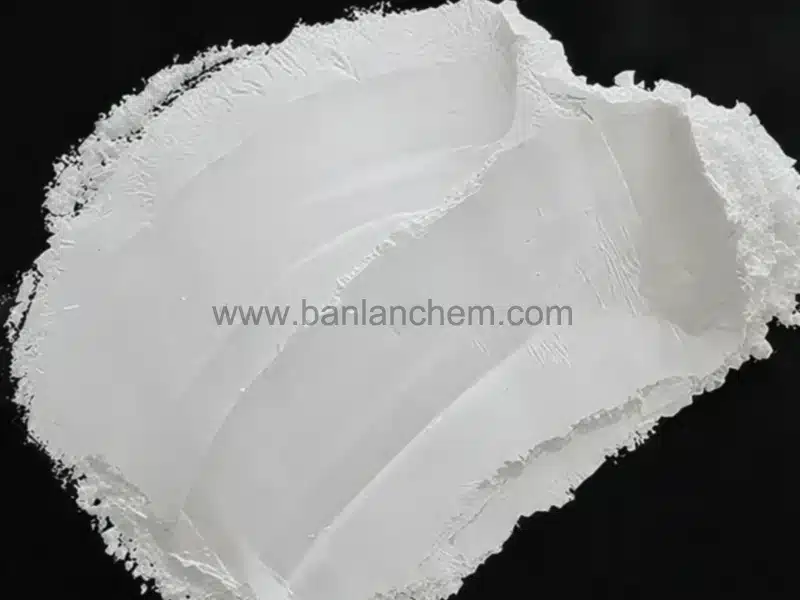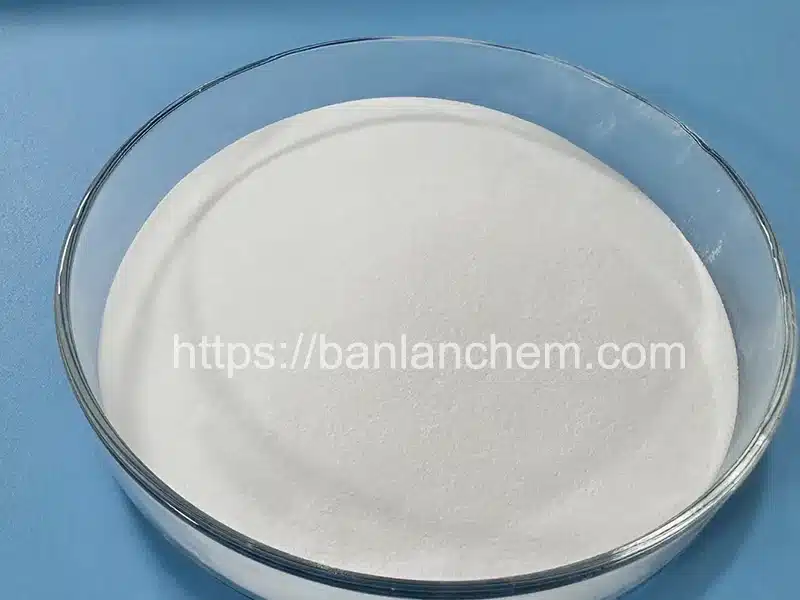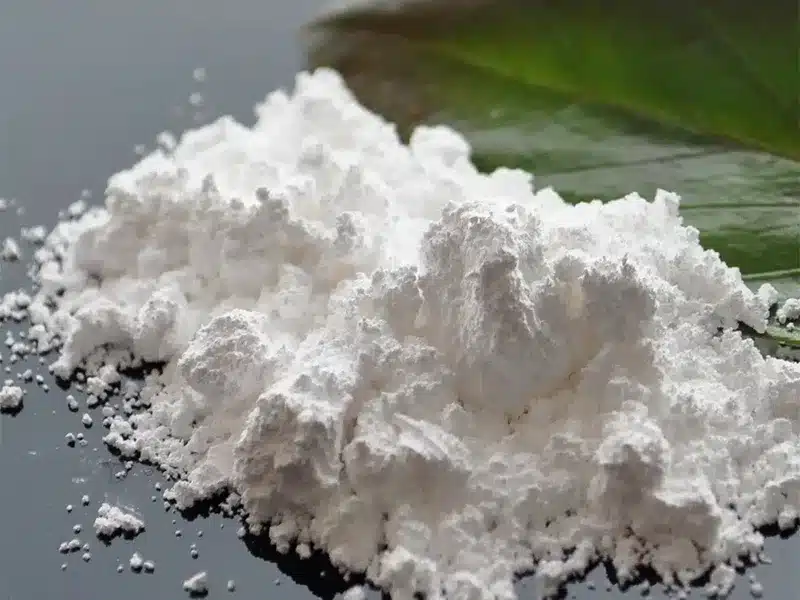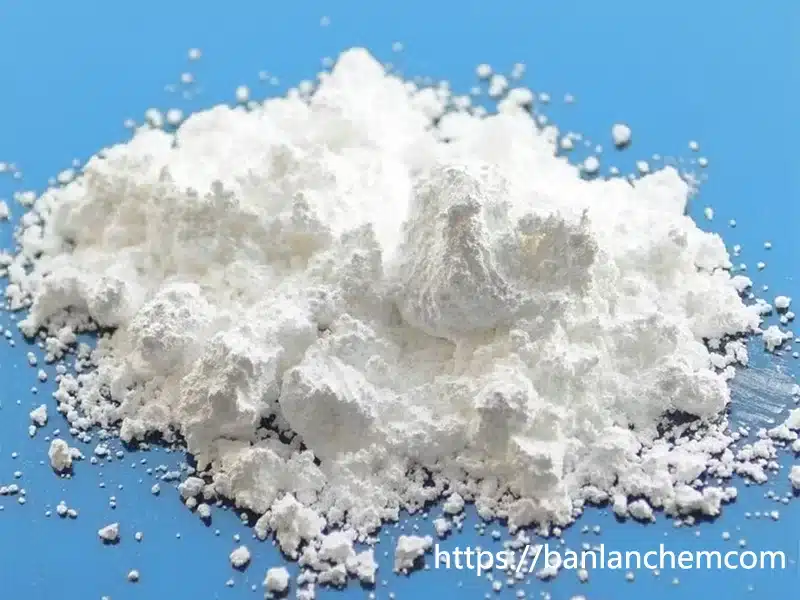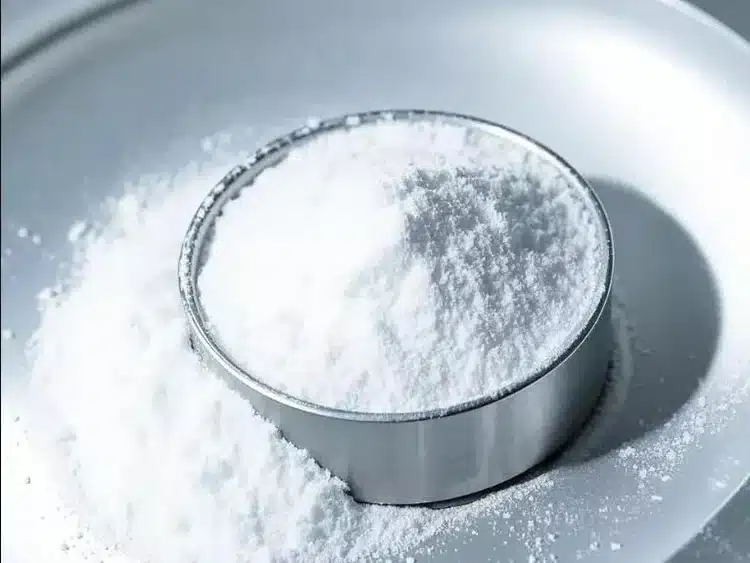What Is the Difference Between Aluminum and Aluminium?
What Are They Made Of?
Chemical Composition
Alumina Powder, also known as aluminum oxide, has the chemical formula Al₂O₃. It is a ceramic material formed by chemically combining aluminum and oxygen.

Aluminum Powder is made from pure metallic aluminum (Al). It consists of tiny metallic particles and has the same chemical composition as bulk aluminum.
Physical Properties
Alumina Powder
- Appearance: White powder with a ceramic look. May vary slightly in color depending on purity and crystal type.
- Density: Around 3.95 g/cm³ (varies by crystal structure).
- Electrical Conductivity: Insulator.
- Thermal Conductivity: Lower than metals.
- Ductility: Brittle and non-ductile.
- Melting Point: Very high, around 2054°C.
- Hardness: Very hard, Mohs hardness 9 (next to diamond).
Aluminum Powder
- Appearance: Silvery or grayish, with a metallic shine.
- Density: Around 2.7 g/cm³.
- Electrical Conductivity: Excellent conductor.
- Thermal Conductivity: High.
- Ductility: Ductile (despite being in powder form, the particles are metallic).
- Melting Point: Approximately 660°C.
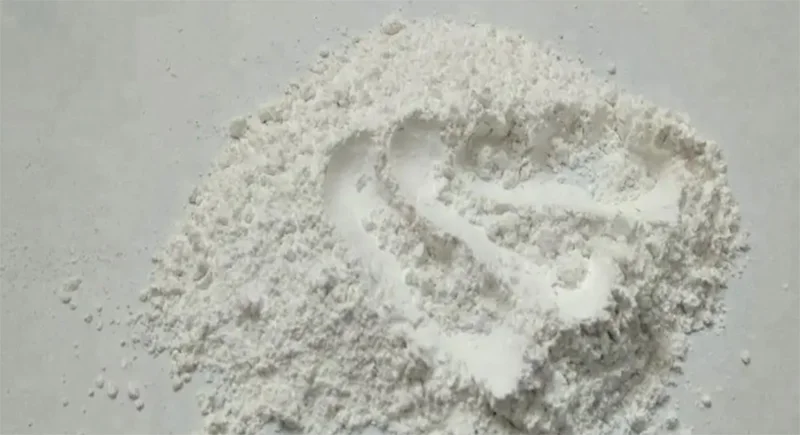
Chemical Properties
Alumina Powder
- Extremely stable: A classic amphoteric oxide, but chemically inert at room temperature.
- Corrosion-resistant: Resists acids and alkalis well.
- High-temperature stability: Maintains structure and properties under extreme heat.
- Non-toxic and biocompatible: Used in medical applications.
- Non-flammable and non-explosive.
Aluminum Powder
- Highly reactive: Reacts quickly with air to form a protective oxide layer.
- Strong reducing agent: Reacts with metal oxides in thermite reactions.
- Reacts with water: Slowly produces hydrogen gas if oxide layer is removed.
- Reacts with acids and bases: Produces hydrogen gas.
- Flammable and explosive in air: Fine particles can form combustible dust clouds.
How Are They Made?
Alumina Powder
- Bayer Process: Bauxite is refined to produce aluminum hydroxide, which is then calcined at high temperature.
- Other methods: Thermal decomposition of aluminum salts (like aluminum sulfate or chloride), burning aluminum in oxygen, or anodizing followed by dissolution.
Aluminum Powder
- Atomization: Molten aluminum is broken into fine droplets using high-pressure gas or centrifugal force.
- Ball milling: Aluminum ingots or scrap are ground into fine powder in ball mills.
Main Applications
Alumina Powder
- Abrasives: Used in sandpaper, grinding wheels, and polishing compounds.
- Refractories: Used in kiln linings, crucibles, and firebricks due to high melting point.
- Ceramics: For structural, electronic, and biomedical components.
- Catalyst Support: In petrochemical processes and automotive catalytic converters.
- Fillers: In plastics, rubber, and coatings to improve strength, insulation, and wear resistance.
- Adsorbents: Activated alumina is used to dry gases and liquids and purify water.
- Gemstones: Rubies and sapphires are made of doped single-crystal Al₂O₃.
Aluminum Powder
- Energetic Materials: Used in fireworks, explosives, and solid rocket fuels for its high reactivity.
- Metallurgy: Used in thermite welding and as a reducing agent.
- Chemical Industry: As a catalyst or reactant in organic synthesis.
- Pigments: For silver-colored paints and inks.
- Construction: Gas-forming agent in AAC blocks.
- Metal Coatings: For protective and reflective coatings.
Summary of Key Differences
| Property | Aluminum Powder | Alumina Powder |
|---|---|---|
| Chemical Nature | Elemental Aluminum (Al) | Aluminum Oxide (Al₂O₃) |
| Appearance | Metallic, silver/gray | White, ceramic-like |
| Electrical Conductivity | Good conductor | Insulator |
| Hardness | Soft | Very hard (Mohs 9) |
| Melting Point | ~660°C | ~2054°C |
| Chemical Activity | Highly reactive | Highly stable |
| Safety | Flammable, explosive | Non-flammable, stable |
| Uses | Explosives, metallurgy, paint | Abrasives, refractories, ceramics |
In Simple Words
Alumina powder is a ceramic powder like fine sand or chalk. It doesn't conduct electricity, isn't magnetic, and is extremely hard, heat-resistant, and chemically stable.
Aluminum powder is a metallic material like tiny foil flakes. It conducts electricity, may be weakly magnetic, and is highly flammable or explosive.
Why Can’t You Use One Instead of the Other?
Because their core properties are completely different.
You can't use aluminum powder for abrasives — it's too soft. And you can't use alumina powder for thermite or fireworks — it doesn't react in combustion.
The reactivity and explosiveness of aluminum powder make it valuable (and dangerous) for energetic uses. The stability, hardness, and high melting point of alumina powder make it essential for high-performance materials like refractories and ceramics.
Linyi BanLan Chemical Technology Co., Ltd. is a national high-tech enterprise integrating R&D, production, sales, and technical services. We specialize in the development and manufacturing of high-quality alumina-based products. Our offerings include high-performance aluminum hydroxide, activated alumina, 4A zeolite, pseudo-boehmite, and more.
If you are looking for premium-grade alumina materials, please feel free to contact us.



